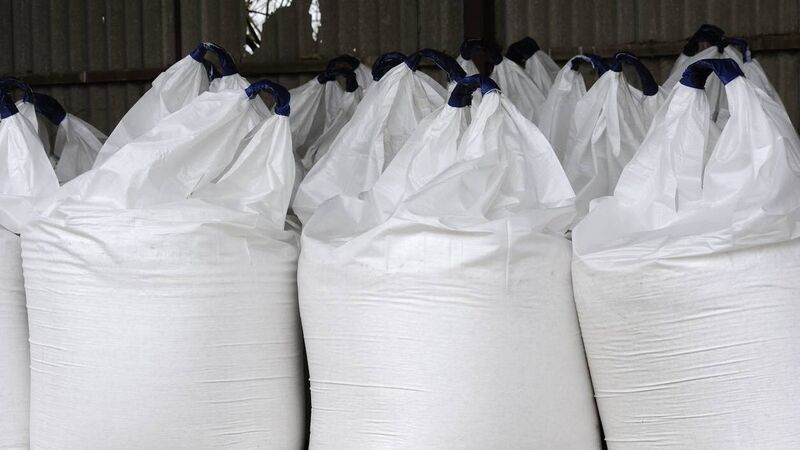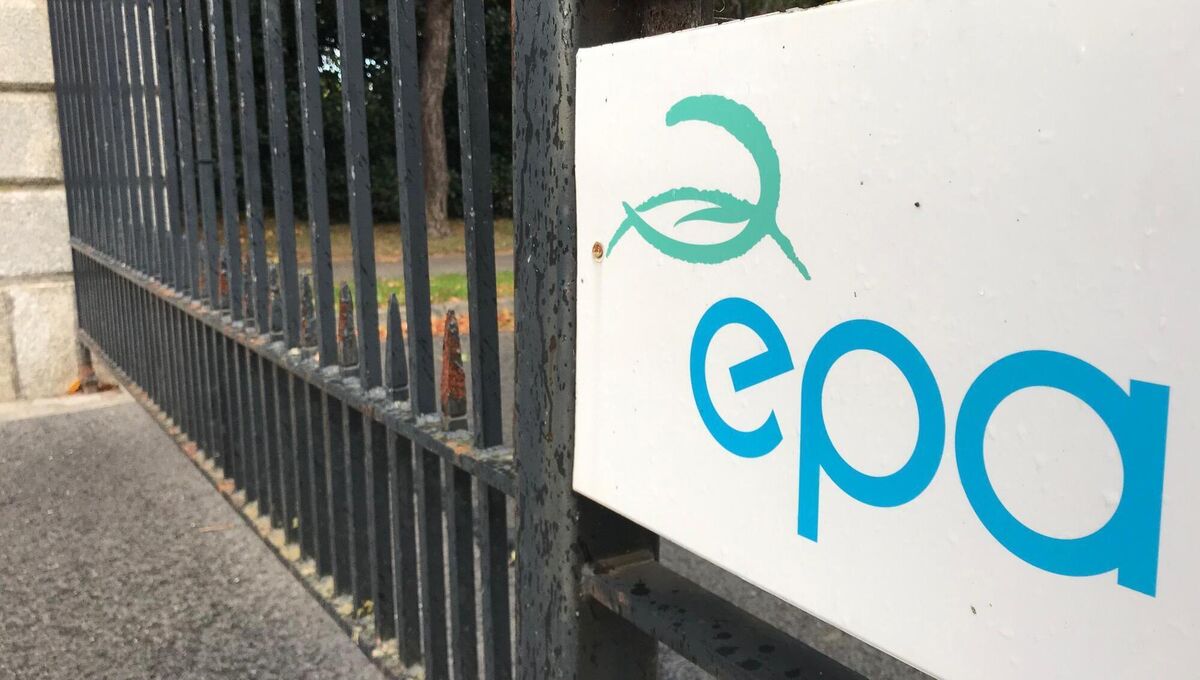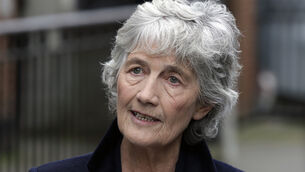Letters to the Editor: Ireland not sharing full picture of greenhouse gas emissions

This under-reporting could have a significant impact on Ireland’s climate targets, as nitrous oxide produced by the use of nitrogen fertilizer is a major greenhouse gas that is 300 times more potent than carbon dioxide.
I am writing to express my concern about the recent revelation that Ireland has been under-reporting its greenhouse gas emissions.
A letter received by our organisation last week from the European Commission’s Directorate-General for Climate Action (DG CLIMA) director general Kurt Vandenberghe, said that after a detailed investigation, the directorate found that Ireland has been using a Tier I generic standard to assess greenhouse gas emissions from Ireland’s grasslands, while forestry and other agricultural activities were fully assessed under Tier II and Tier III, which require country-specific crop and fertiliser impacts to be assessed.
This under-reporting could have a significant impact on Ireland’s climate targets, as nitrous oxide produced by the use of nitrogen fertilizer is a major greenhouse gas that is 300 times more potent than carbon dioxide. The application of nitrogen fertilizer increases nitrous oxide emissions by between 20-50%.
As grasslands cover 4.1 million hectares of Ireland, the cumulative impact of the under-reporting on emissions is “significant”.
By comparison, the current protests by farmers are over a 12% cut to the permitted derogation for nitrogen fertilizer for a limited number of farmers in a limited number of catchments because of their impact on water quality.
The current head of Teagasc, Frank O’Mara, was the lead author of a paper published by the Environmental Protection Agency in 2007 which investigated the impact of moving grassland emissions accounting from Tier I to II. That study determined that in year two of their two-year research project, the emissions were “substantially higher” than reported under Tier I.

However, citing the many variables that impact on these emissions, the authors concluded: “Therefore, to move from a Tier I to a Tier II approach, further data from long-term multi-site [covering a range of soil types and N inputs] monitoring studies are required.”
This study provides clear evidence that Ireland has been knowingly under-reporting its emissions from grasslands for many years.
The public needs to be aware of the consequences of under-reporting and the need for urgent action.
We cannot afford to wait any longer.
Tony Lowes
Friends of the Irish Environment,
Eyeries, Co. Cork
Fancy a flutter, Fergus?
I have long been a reader of Fergus Finlay’s weekly column, and once personally complimented him.
However, this week I vehemently disagreed with him. He casually treats the whole subject of a proposed ban on bookmaker advertising between 5am and 9pm (ok for insomniac gamblers?), being steadfastly proposed by minister of state James Brown. Mr Finlay apparently thinks that horseracing is a light flutter of fancy by rich people indulging a whim.
Nothing could be further from the truth.
FACTS: 40,000 are employed in the industry; worth €60 million in Galway Race Week; owners contribute €40 million (with deductions, get 60% of prize money); huge employment in rural areas; 700 trainers earn their crust; 8,000 foals yearly (fourth in the world); 6,000 breeders (93% less than five mares).
Mr Finlay supports the banning of bookies advertising on Racing TV & Sky Racing. Racing TV is the shop window of Irish racing as it broadcasts every Irish race.
How else would three horses, who won their first race at our local Point to Point in Lismore, sell for €300k in Cheltenham four days later? Only for widespread TV coverage. Racing TV pay about €50k for each Irish race meeting, otherwise courses would close. It is but another ploy in striving for a nanny state in removing support for the industry.
What next? Black drapes over the alcohol and chocolate sections in the shops to protect alcoholics and diabetics. Come on Mr Finlay, come racing on Wednesday to Listowel and join 24,000 punters enjoying themselves.
Edward Lynch
Lismore, Co. Waterford
Cuts to speed limit an over-reaction
The Government has utterly over-reacted to recent road safety statistics with its lower speed-limit proposals.
The only remedy we ever hear from the Irish road safety hierarchy is to slow down. I have rarely heard any promotion of better driving.
There are people on the road who are unsafe at any speed and often are a menace to competent drivers — e.g. those who can’t negotiate a roundabout in a proper manner, those who position on the left when turning right, and the “slugs” who sit happily on the white line without a glance in the rear-view mirror to the motorists behind them.
The new speed limits are tokenism. At present motorists are told they should at all times assess their speed according to road layout and conditions.
We are now to forget all that and instead slog along dutifully at a speed that we can plainly see is unnecessarily restricted. It will simply lead to more over-taking of the slow movers.
The placement of the GoSafe speed vans is also contributing to risk. They are typically on straight stretches where drivers can safely overtake slow traffic.
Drivers will be forced to hold off and instead do their overtaking manoeuvre on the twisty bits further along.
As for vans and cameras on the 50km/h wide straights exiting towns — that is just plain revenue generation.
I fear the requirement to have a red flag man out ahead if we continue on this one-dimensional response to the efficient movement of traffic on our roads.
Ted Neville
Douglas, Cork
RSA should change testing process
I’m glad to see the RSA is taking steps to increase road safety income, so perhaps they will be able to increase the numbers of driving licence testing facilities and personnel that now has a backlog of over 50,000 applicants.
I find the acquisition of a driving licence here to be the cause for driving without a licence. Having to have another driver in your car for a year after you have already passed your road test is an archaic rule.
I am American-born, retired here and am still puzzled by the RSA’s prejudicial treatment toward non-EU or EEA countries in the exchange of driving privileges.
As an American, I am able to come to Ireland and buy or rent a vehicle and insure a vehicle, tax and road test it. I can drive here for 365 days without any licence exchange. On the 366th day, I am no longer qualified to drive here and am subject to having to apply for a licence, the same as any student driver. I am simply not able to maintain any logical explanation for this overnight phenomenon. I have driven for 50 years.
I believe our system here is prejudicial in this matter because if I possessed a driver's licence from an EU or EEA country, I would just exchange licences. It’s amazing that I can drive in any other country in the world but not in the country that I live in legally.
I have heard of an incredibly logical measure that the RSA can put into place almost immediately if they want to level out the current and future waiting time.
The RSA already has authorised driving instructors who are responsible for seeing to training learner drivers. The instructors already inform the student they are ready to take their examination. They should be able to issue the road test and award licences.
The instructors know far better than any other official tester the ability of the driver they have passed on each section. They know if the person is ready or they would not sign off the lessons.
Thomas Gilroy
Ballintrillick, Co. Sligo
Quinn has cost me enough
My daughter was four years old at the time of the financial crash in 2008. Last year, at 17, she passed her driving test.
Her car insurance, as with all such young drivers, was punitively expensive and made more so by the 2% levy imposed to bail out Quinn Insurance. At the last count, it is estimated that she will be 33 before this levy is scrapped.
Her father and I have paid this levy on all our motor and home insurance since 2012. In addition, all of us continue to pay the costs involved in bailing out the banks, including Anglo Irish Bank.
So forgive me if I don’t rush out to buy a copy of Sean Quinn’s book. I think he has cost me enough already.
Bernie Linnane
Dromahair, Co. Leitrim
Russia is really to blame for deaths
Elizabeth Cullen (“Cluster munitions”, Irish Examiner, September 13, 2023) refers to a Humanity and Inclusion report to make the point that, in 2022, nearly 700 people had been either killed or injured by cluster munitions in Ukraine.
She then makes the point that the Irish authorities in Shannon have not inspected any US plane to find out if it contained such weapons.
Ireland, as a signatory to the Convention on Cluster Munitions (2008), has a duty to ensure that it does not facilitate the transfer of these weapons.
Ms Cullen’s argument is valid but does not engage with the ethical complexities of the issue.
Humanity and Inclusion reports indicated that the vast majority of civilian casualties were caused by Russian forces.
Also, the Biden administration supplied cluster munitions at the request of the Ukrainian government because of shortages. The calculation is that the use of cluster munitions, away from densely populated areas, will save lives.
Dr Don O’Leary
Mallow, Co. Cork

Unlimited access. Half the price.
Try unlimited access from only €1.50 a week
Already a subscriber? Sign in







